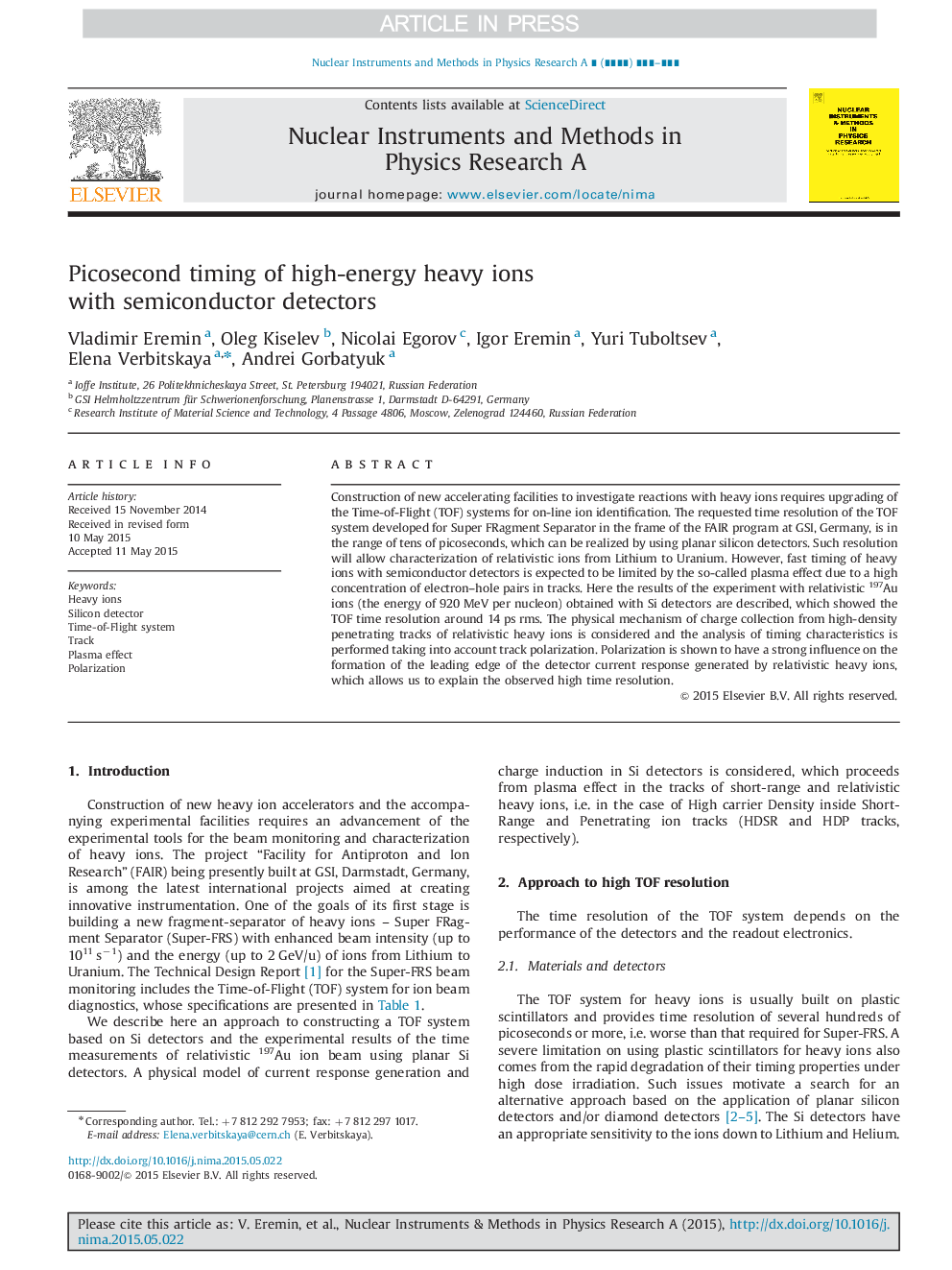| Article ID | Journal | Published Year | Pages | File Type |
|---|---|---|---|---|
| 8172468 | Nuclear Instruments and Methods in Physics Research Section A: Accelerators, Spectrometers, Detectors and Associated Equipment | 2015 | 7 Pages |
Abstract
Construction of new accelerating facilities to investigate reactions with heavy ions requires upgrading of the Time-of-Flight (TOF) systems for on-line ion identification. The requested time resolution of the TOF system developed for Super FRagment Separator in the frame of the FAIR program at GSI, Germany, is in the range of tens of picoseconds, which can be realized by using planar silicon detectors. Such resolution will allow characterization of relativistic ions from Lithium to Uranium. However, fast timing of heavy ions with semiconductor detectors is expected to be limited by the so-called plasma effect due to a high concentration of electron-hole pairs in tracks. Here the results of the experiment with relativistic 197Au ions (the energy of 920 MeV per nucleon) obtained with Si detectors are described, which showed the TOF time resolution around 14 ps rms. The physical mechanism of charge collection from high-density penetrating tracks of relativistic heavy ions is considered and the analysis of timing characteristics is performed taking into account track polarization. Polarization is shown to have a strong influence on the formation of the leading edge of the detector current response generated by relativistic heavy ions, which allows us to explain the observed high time resolution.
Related Topics
Physical Sciences and Engineering
Physics and Astronomy
Instrumentation
Authors
Vladimir Eremin, Oleg Kiselev, Nicolai Egorov, Igor Eremin, Yuri Tuboltsev, Elena Verbitskaya, Andrei Gorbatyuk,
